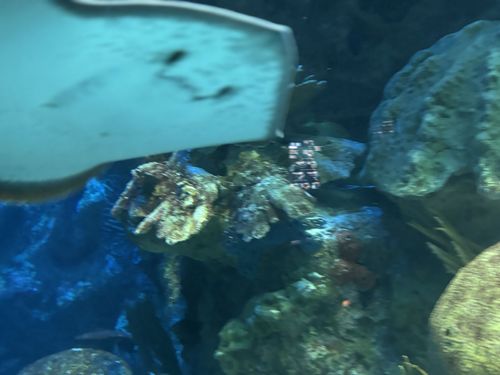Mantis Shrimp (likely Peacock Mantis Shrimp based on coloration seen in the image)
Scientific Name: Odontodactylus scyllarus (for Peacock Mantis Shrimp); many other species exist within Stomatopoda
Order & Family: Order: Stomatopoda; Various families including Odontodactylidae (for Peacock Mantis Shrimp)
Size: Typically 3 to 18 cm (1.2 to 7 inches) in length, though some species can grow larger, up to 30 cm (12 inches).

Natural Habitat
Tropical and subtropical waters, typically in shallow sandy or muddy seafloors, coral reefs, and rock crevices. They dig U-shaped burrows or inhabit existing holes.
Diet & Feeding
Carnivorous. They primarily eat crustaceans, fish, and other small marine organisms. Smashers break open hard-shelled prey, while spearers ambush and stab soft-bodied prey.
Behavior Patterns
Mantis shrimp are solitary and aggressive, living in burrows. They are known for their incredibly powerful and fast strikes using dactyls (raptorial appendages) to stun or dismember prey. The two main types are 'smashers' (blunt clubs for smashing shells) and 'spearers' (barbed claws for impaling soft-bodied prey). Their vision is highly complex, allowing them to see polarized light and often up to 16 color channels.
Risks & Benefits
Potential risks include their powerful strike which can cause painful lacerations or bone fractures if handled. They can also damage aquarium glass. Benefits include their role as a predator in marine ecosystems, helping to control populations of various invertebrates. They are also of scientific interest due to their unique vision and striking mechanism.
Identified on: 9/4/2025